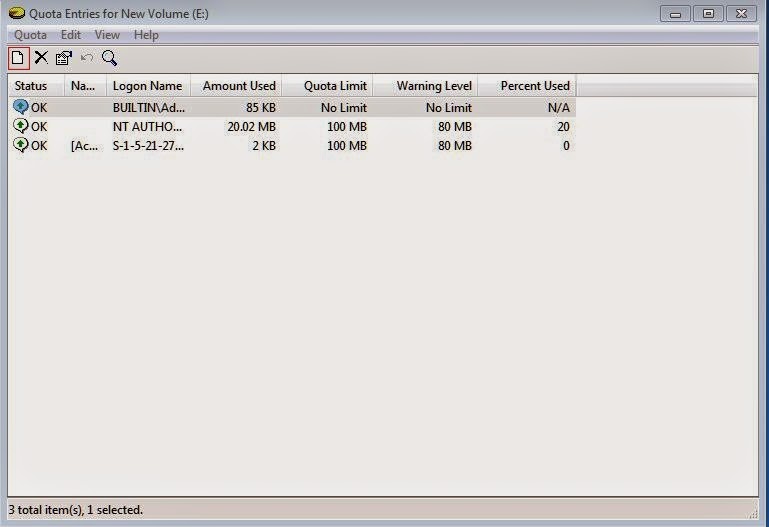किसी भी ड्राइव पर डिस्क लिमिट कैसे लगाएं
Disk Quota is a limit set by system administrator for standard users to use the disk space of a system. It is only available with NTFS file system.
Here I am going to explain the step by step process of disk quota for user1 in my system.
Login with administrator account and Go to the target drive on which you want to configure quota suppose it is E: drive.
Right Click on E Drive & select Properties
Go To Quota Tab & Select all check box available and provide disk usage limit in the box.
I have provided 100 MB limit and 80 Warning level, click on Apply button & click on Quota Entries button
after clicking on quota entries button quota entries dialog box will open before you. click on new quota entrybutton from tollbar now it will open select users as given in following screens.
In above dialog box type the username to which you want to restrict disk usage. in my example it is user1
select Ok and close the quota entries dialog box and close the quota management dialog box also.
and after closing all dialog boxes log off from administrator account and login with user1 and try to put files larger than 100 MB it will popup a message.
Disk Quota is a limit set by system administrator for standard users to use the disk space of a system. It is only available with NTFS file system.
Here I am going to explain the step by step process of disk quota for user1 in my system.
Login with administrator account and Go to the target drive on which you want to configure quota suppose it is E: drive.
Right Click on E Drive & select Properties
Go To Quota Tab & Select all check box available and provide disk usage limit in the box.
I have provided 100 MB limit and 80 Warning level, click on Apply button & click on Quota Entries button
after clicking on quota entries button quota entries dialog box will open before you. click on new quota entrybutton from tollbar now it will open select users as given in following screens.
In above dialog box type the username to which you want to restrict disk usage. in my example it is user1
select Ok and close the quota entries dialog box and close the quota management dialog box also.
and after closing all dialog boxes log off from administrator account and login with user1 and try to put files larger than 100 MB it will popup a message.































